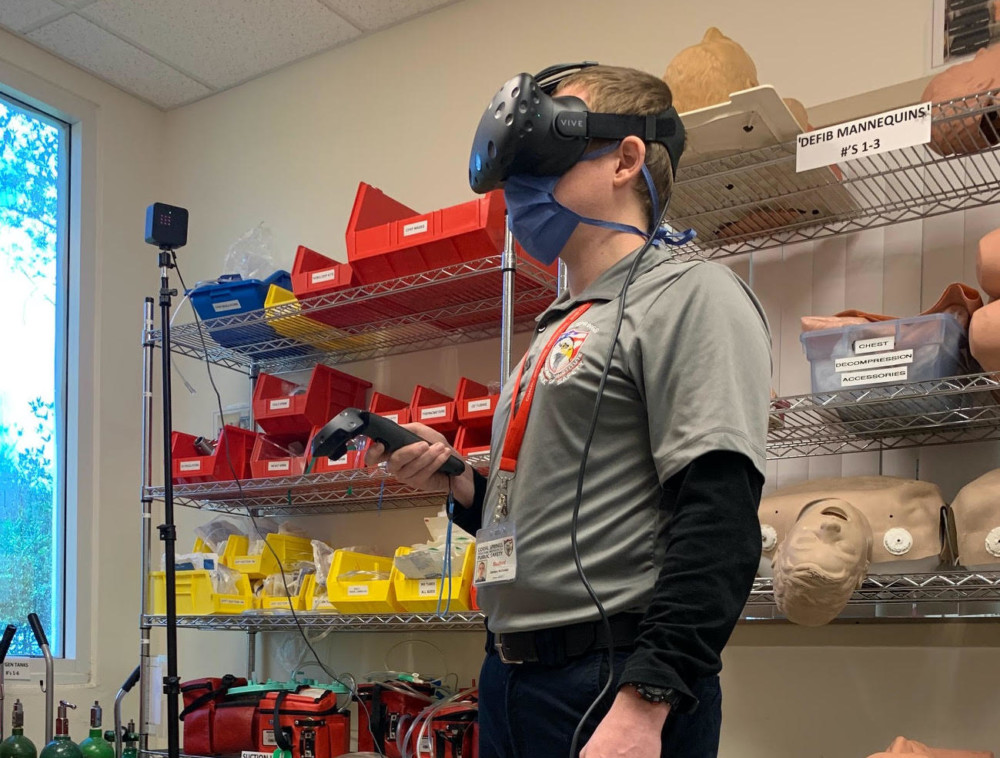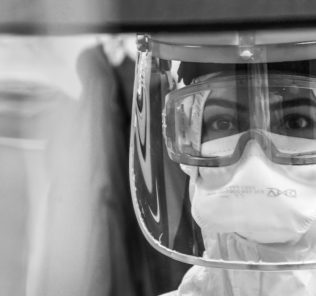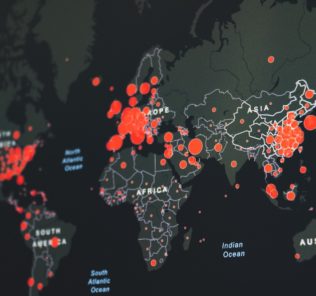Remote Learning in Clinical Simulation is Here to Stay: Have You Chosen Your Digital Solution?
Across the field of health care simulation, COVID-19 has forced simulation centers and healthcare simulation educators to reassess how simulated training scenarios are delivered to learners. Due to the coronavirus pandemic, many of these institutions have made the switch to remote simulation. However, this transition requires access to a comprehensive virtual simulation solution. To rapidly deploy such technologies, HealthySimulation.com recommends considering the VRpatients application as an ideal remote physiologically-based clinical simulation training platform that allows learners to remotely interview, assess, diagnose and treat patients in real-time.
Using the VRpatients platform, educators and trainers can build clinical cases based on their own protocols in less than 30 minutes. The cases are brought to life for learners, who are assigned a case and then enter the application to interact directly with the patient avatar to treat in real-time. This induces real stress similar to what a practitioner may experience in the field, and increases knowledge retention. Following completion of a timed case, learners’ critical thinking skills and competency are objectively assessed using VRpatients’ enhanced grading rubric. Learners can make mistakes and repeat a case as many times as needed for skill mastery.
Before the spread of COVID-19 was identified, VRpatients was already established as a remote, immersive simulation application. As the solution is cloud-based, The VRpatients application can be deployed with or without a trainer present, which makes the platform a turnkey solution to the rapid and widespread need for remote learning. During the ongoing pandemic, VRpatients chose to reprioritize the company’s planned enhancements to focus on remote learning deployment and online experiences. That will ensure that as many learners as possible have access to the application’s newest version, regardless of equipment.
Sponsored Content:
“The immediate and widespread adjustment to new learning mandates instantly launched educators, trainers, employers and students into an online, remote learning environment. The challenge in health care education then lies in how to ensure both learning and assessment of skills from a distance is as effective remotely as it is in person,” Tom Cox, N.R.P. (Ret.), EMS Sales Director at VRpatients, said. “With VRpatients, every action taken by the student is recorded by its built-in grading rubric, allowing the educator to objectively assess the student’s critical thinking skills, competency and field preparedness. Now, educators can build a clinical case scenario for nearly any emergency situation from scratch and deploy it remotely to an unlimited number of recipients in a matter of minutes — remotely.”
Cox added that the health care industry as a whole needs to immediately begin realizing the advantages of online/VR/AR for education, training, skill reinforcement, knowledge retention and assessment; and needs to begin widespread acceptance. He believes that now, more than ever, this requires collaboration as remote learning becomes the norm and health educators are forced to adapt their teaching tools without compromising educational standards.
“Formerly, there was no single application for health care trainers and educators that allowed them to build simulative clinical cases from scratch and deploy them in an immersive learning environment. Modern learners had evolved beyond traditional classroom and sim lab training, preferring the gamification experience of VR,” Cox said. “Plus, the capital expense of sim devices and environments, such as mannequins, facilities, travel and time required was becoming increasingly cost-prohibitive. Add to that the challenges brought on by new remote learning requirements, and you have quite a dilemma.”
Cox added that VRpatients answers these challenges by providing immersive, interactive training in real time at a low-cost point of entry. The solution’s built-in, “error-proof” clinical case authoring tool allows educators and trainers to have complete control and ownership of the clinical case scenarios, delivered how they want them, when they want them. When learners put on the VR goggles or log into the web-based application, they experience lifelike patient modeling, real-time responsiveness, realistic moulage and animations presented in living environments.
Sponsored Content:
Just like real life, this induces stress and builds knowledge retention. Further, the application’s enhanced grading rubric allows the educator/trainer to objectively assess the learner’s performance and identify any skills or knowledge gaps. Moreover, the subscription-based cost model can be more easily incorporated into budgets.
“Traveling and in-person group training that requires a mannequin and your imagination just doesn’t make sense when VR can be easily replicated, deployed and modified to teach to any skill or protocol. And in most cases, the cost model is subscription-based, with a much lower point of entry than capital expenditures,” Cox said.
Benefits of the VRpatients’ Virtual Platform
Making VRpatients standout from the company’s competition, this learning platform is the only remote virtual training application built exclusively for first responders, and the only one that is fully customizable using a “build it as you want it” error-proof case authoring tool. This is what VRpatients really considers to be the company’s competitive advantage. All VRpatients developers are in-house, which allows the company to be very hands-on and provide customers with “white-glove” training and support from day one.
“VR technology is revolutionizing the field of health care by proving that it is a more impactful and cost-effective way to learn. Research proves VR/AR boosts engagement and knowledge retention, enabling organizations to apply or enforce consistent, measurable standards at scale, especially when in-person training is not practical or safe,” Cox said. “We are dedicated to continuous improvement, and to that end, constantly updating the system — adding new patients, new environments, new case logic, modifying the grading rubric, etc. — so educators/trainers are always working in the latest technology available.”
To date, Cox says educators have been very impressed with the solution’s ability to allow them to manipulate the patient and be creative with their cases. He believes educators are excited to have a tool that reinforces student learning, and have found added benefits, including using it for pre-employment screenings and to challenge students in a remote learning environment. Moving forward, Cox shared that VRpatients’ goal is to become the training tool of choice for critical thinking health care education and assessment among top-tiered EMS agencies and educational institutions in the world.
When considering the purchase of a remote simulation solution, Cox suggests that educators and institutions first and foremost consider the quality of the simulation and the realism of the platform. Also, he says they should consider flexibility in the instructor’s ability to manipulate clinical cases in order to achieve their teaching goals. Lastly, they must ask, how easy is the application to deploy? Can it be done remotely? Is the solution bound to a particular location or piece of equipment, or is the application flexible enough to access from any computer with or without a VR headset?
Learn More About VRpatients!
Sponsored Content:



















